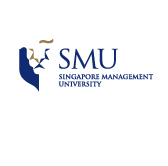Publication Type
Conference Proceeding Article
Version
publishedVersion
Publication Date
8-1998
Abstract
Today’s economy is increasingly driven by the integration of information in many aspects of business. Greater information intensity in industries such as hospital supply and express package delivery is causing a fundamental transformation in the way firms conduct business, the menu of competitive choices that they are faced with, and the need to continuously keep ahead of competitors. Information driven businesses appear to adopt several competitive or operating innovations. These include: mass customization or the creation of customized products which offer virtually individualized products to customers in mass markets (Pine, 1993); disintermediation or the creation of direct links between producers and consumers such that traditional intermediaries such as wholesalers and retailers are removed from the value-added chain in an industry (Office of Technology Assessment, 1994; Benjamin and Wigand, 1995); self-design of products by customers as firms allow them to design products in-house and then transmit production specifications directly to suppliers; faster response times as direct communication links between customers and suppliers enable reduced order entry and processing cycles and on-demand production (Keen, 1993); and lower transaction costs arising from expanded use of single-source electronic sales channels (Picot and Kirchner, 1987). This research seeks to forward understanding of sources of value creation in an environment that is increasingly information rich. It therefore focuses on the nature of information itself as a resource, the effective management of which, might be a source of competitive advantage. Implicit in this assertion is the belief that the mere possession of information technology is not a source of competitive advantage. Hence, we focus not on the management of information technology, but on the ways that information itself may be used to reduce production costs, enhance coordination both within and outside the boundaries of the firm, and enhance new product development. The convergence of information, physical products, and services is becoming a particularly powerful driver of value creation in the form of fusion products which embody all three elements (Goldman et al, 1995). Toward this end we propose two fundamental research questions. How can information pertaining to value creation activities be classified? Do firms go through distinct evolutionary stages in information management as they use more sophisticated types of information? To answer the foregoing, we need to be able to categorize different types of information based on their features, usage, and impact on competitive advantage. The reader should note that in creating this classification scheme we consider only information that is used in the firm’s value chain and in the value chain of it’s customers.
Discipline
Databases and Information Systems
Research Areas
Information Systems and Management
Areas of Excellence
Digital transformation
Publication
Proceedings of the 1998 Association for Information Systems Americas Conference, Maryland, USA, August 14-16
First Page
742
Last Page
744
City or Country
Maryland
Citation
MCINTOSH, J. and SIAU, Keng.
A typology for understanding the role of information as a source of value creation in the emerging information economy. (1998). Proceedings of the 1998 Association for Information Systems Americas Conference, Maryland, USA, August 14-16. 742-744.
Available at: https://ink.library.smu.edu.sg/sis_research/9674
Creative Commons License

This work is licensed under a Creative Commons Attribution-NonCommercial-No Derivative Works 4.0 International License.


